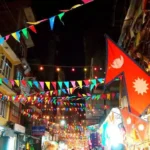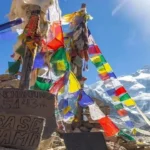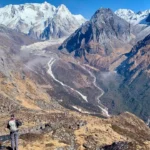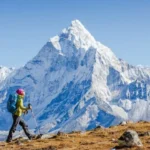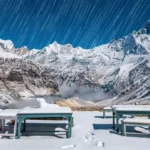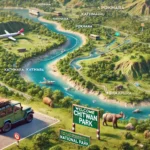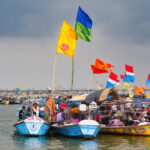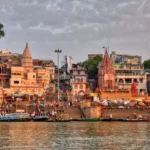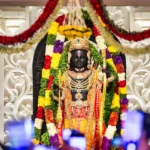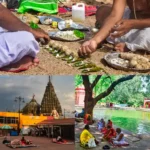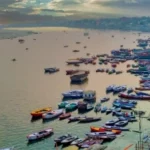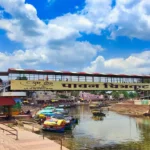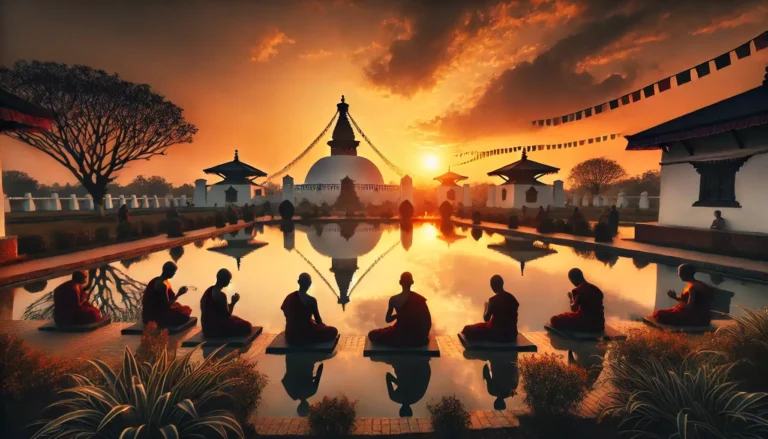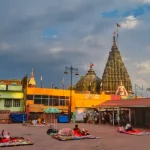Best Time to Visit Bardia National Park
The ideal time to explore Bardia National Park depends on what you’re hoping to see and do — but overall, the dry season (October to April) is the sweet spot for wildlife viewing and adventure.
Here’s a quick month-by-month breakdown to help you plan your trip:
🍂 October – November (Post-Monsoon Magic)
- Why it’s great: The park is lush and green after the rains, with clear skies and fresh air.
- Wildlife: Good visibility and plenty of water sources make it easier to spot animals.
- Vibe: Cooler temps and fewer visitors — a peaceful time to visit.
Best for: Photography, birdwatching, and enjoying the landscape at its most vibrant.
❄️ December – February (Cool & Dry)
- Why it’s great: Crisp mornings and sunny days. Wildlife tends to gather near water sources, making sightings more likely.
- Wildlife: High chance of spotting tigers, rhinos, and elephants.
- Temps: Ranges from chilly in the early morning (~5°C) to warm in the afternoon (~25°C).
Best for: Jeep safaris, jungle walks, and clear-sky rafting.

🌸 March – April (Hot but Rewarding)
- Why it’s great: Vegetation starts to dry out, improving visibility. Animals are drawn to rivers and waterholes.
- Wildlife: Some of the best chances to spot tigers and elephants.
- Temps: Can get hot, often crossing 35°C — bring a hat and hydration!
Best for: Serious wildlife spotting and photography.
🌧️ May – September (Monsoon Season)
- Why it’s tricky: Heavy rains make roads muddy and some areas inaccessible. Many lodges close during peak monsoon (especially July–August).
- Pros: Fewer tourists, lush landscapes, and dramatic skies.
- Cons: Wildlife is harder to see due to thick vegetation and rain.
Best for: Only recommended for the truly adventurous or those focusing on cultural experiences.
🎯 TL;DR:
If your goal is wildlife viewing, go between November and April. For lush green views and fewer crowds, try late September to early November.
How to Get to Bardia National Park
While Bardia may feel like a remote jungle hideaway (and that’s part of its charm), getting there is easier than you might think — especially if you plan. Whether you’re coming from Kathmandu, Pokhara, or even India, there are several ways to reach the park.
✈️ Option 1: Fly + Drive (Fastest & Most Popular)
- Fly to Nepalgunj Airport (KEP)
- From Kathmandu: 1-hour flight
- Multiple daily flights with Buddha Air, Yeti Airlines, or Shree Airlines
- Stunning views of the Himalayas en route
- Drive to Bardia National Park
- From Nepalgunj to Thakurdwara (main park entry): ~2.5–3 hours by jeep or local taxi
- You’ll pass through villages and countryside — it’s a scenic drive!
Best for: Comfort and saving time
🚌 Option 2: Bus All the Way (Budget-Friendly Adventure)
- From Kathmandu or Pokhara to Ambassa (closest town to Bardia):
- Travel time: 12–15 hours
- Buses range from tourist coaches to local rides — book through a reliable travel agency for safety and comfort.
- From Ambassa, it’s a 1-hour taxi or jeep ride to the park lodge.s
Pro Tip: Overnight buses help you save on accommodation, but bring snacks and patience!

🚙 Option 3: Private Jeep or Car Hire
- Ideal if you’re in a group or want a more flexible, scenic route
- Can be arranged from major cities or even from Lumbini, Chitwan, or Nepalgunj
Best for: Road trip lovers who want to explore the Terai region along the way
🌍 Coming from India?
- Cross at the Gulariya–Murtiha border near Bahraich, Uttar Pradesh.
- From the border, it’s about 2–3 hours to Bardia by local transport or pre-booked vehicle.e
- You’ll need valid Indian and Nepali visas/documents — check before you go!
📍 Final Stop: Thakurdwara Village
This is the main tourist hub right outside the park gates — home to eco-lodges, homestays, guides, and the visitor centre.
Where to Stay: Lodges, Eco-Resorts & Homestays in Bardia National Park
Whether you’re a backpacker on a budget, a couple looking for a romantic eco-retreat, or a family seeking an immersive nature escape, Bardia has accommodations for every vibe. Most stays are located in or around Thakurdwara village, just outside the park entrance — making it super convenient for daily safaris and village visits.
🏡 Eco-Lodges & Jungle Resorts
If you’re looking for a mix of comfort and close-to-nature vibes, eco-lodges are the way to go. They offer cosy cottages or bungalows set in lush gardens, often run by conservation-minded locals.
Top picks:
- Tiger Tops Karnali Lodge – Luxury eco-lodge with high-end service, sustainability focus, and expert naturalist guides. A favourite for wildlife lovers.
- Bardia Eco Lodge – Mid-range with great food, friendly staff, and jungle tours included.
- Rhino Lodge Bardia – Affordable, laid-back stay with a nice jungle setting and experienced guides on staff.
What to Expect:
- Clean rooms with private bathrooms
- On-site restaurants serving local & international cuisine
- Guided safari packages available

🌱 Community-Based Homestays
For a more authentic and culturally rich experience, consider staying with a local Tharu family in a homestay. These places are simple but welcoming, and your stay directly supports local livelihoods.
Why choose a homestay?
- Delicious home-cooked meals (often from their garden)
- Warm hospitality and storytelling from your hosts
- Opportunities to join in local traditions, cooking, or farming
Bonus: Many homestays are part of community tourism programs that reinvest in conservation and education.
💸 Budget Guesthouses
Backpackers and budget travellers, don’t worry — Bardia has plenty of affordable options with rustic charm and great company.
Expect:
- Basic but clean rooms
- Shared bathrooms in some places
- Common areas for meeting other travellers
- Safari tours available for cheaper rates
📌 Things to Consider When Choosing a Stay:
- Proximity to park gates: Closer = less travel time for safaris
- Guide quality: Ask if they offer certified naturalists
- Eco-credentials: Look for lodges with sustainable practices (solar, compost, local sourcing)
- Meals included? Many offer full-board packages.
🌿 Pro Tip: Book your stay in advance during the peak season (Dec-Mar), especially at eco-lodges, as rooms fill up fast!
Tharu Culture: Exploring the Local Heritage Around Bardia National Park
A visit to Bardia National Park isn’t just about wildlife — it’s also an invitation to step into the world of the Tharu people, one of Nepal’s most fascinating and culturally rich indigenous communities. Their villages surround the park, and engaging with their way of life adds a whole new layer to your experience.
🧬 Who Are the Tharu?
The Tharu are the original inhabitants of Nepal’s Terai region, known for their deep connection to the land and forests. For centuries, they’ve lived in harmony with the wilderness — and their culture reflects that balance beautifully.
Their homes are traditionally made from mud and bamboo, with thatched roofs and intricate geometric wall paintings. Family structures, food traditions, and even their folklore are uniquely adapted to the rhythms of nature.
🎭 Cultural Experiences You Can Join
Most lodges and homestays around Bardia offer cultural programs that go far beyond surface-level tourism:
🔥 Traditional Dance Performances
Enjoy vibrant performances featuring stick dances, drum beats, and storytelling. These dances often depict ancient legends or everyday life in the jungle.
🍲 Cooking with the Locals
Learn how to make dhikr, Shoghii (river snails), or lentil-based curries the Tharu way. Meals are cooked over open fires using fresh, local ingredients — often grown right in their backyards.

🧵 Craft Workshops
Try your hand at weaving, basket-making, or natural dyeing — skills passed down through generations and still used in daily life.
🛖 Village Walks & Storytelling
Wander through the villages with a local guide, who’ll share stories about:
- Tharu spiritual beliefs
- How they coexisted with tigers and elephants for generations
- Their history of malaria resistance and unique herbal medicine knowledge
👐 Why It Matters
By spending time with the Tharu community, you’re not just enriching your own journey — you’re supporting ethical tourism. Many of these programs are community-run and designed to empower local families through sustainable income and cultural preservation.
🌟 Pro Tip: Book a homestay or lodge that partners directly with the Tharu community — your visit will have a more meaningful impact and a much richer vibe.
Tips for Visiting Bardia National Park Responsibly
Exploring the wild beauty of Bardia is an unforgettable experience — but it comes with a responsibility to protect the ecosystem and respect the local communities that make this place so special. Here are some key ways to travel responsibly while making the most of your trip:
🌱 1. Choose Eco-Friendly Accommodation
Opt for eco-lodges or homestays that practice sustainability — think solar power, rainwater harvesting, composting, and locally sourced food. Your choice directly supports businesses that care for the environment and the community.
🐾 2. Respect Wildlife Boundaries
- Stay quiet during safaris — animals behave more naturally when they’re not disturbed.
- Never feed or touch wild animals.
- Always follow your guide’s instructions, especially on jungle walks (they’re trained in safety and animal behaviour).
- Avoid flash photography and loud noises.
🗑️ 3. Leave No Trace
- Take all your trash with you — including biodegradable waste like fruit peels.
- Say no to plastic bottles: bring a reusable water bottle and refill it at your lodge.
- Stick to marked trails and don’t damage vegetation or disturb nesting areas.
🧍♀️ 4. Support Local Economies
- Hire local guides — they know the land better than anyone.
- Buy handicrafts or souvenirs directly from Tharu artisans (not factory-made imports).
- Eat local — Tharu cuisine is delicious and your money helps small family-run kitchens thrive.

🙏 5. Respect Tharu Culture
- Dress modestly when visiting villages.
- Always ask before taking someone’s photo.
- If invited into a home, follow simple customs — remove shoes, accept food or drink graciously, and show appreciation.
📚 6. Educate Yourself Before You Go
A little background knowledge goes a long way. Learning about the park’s conservation efforts, endangered species, and Tharu history helps you engage more deeply — and travel more consciously.
🔁 7. Give Back (If You Can)
Some lodges and NGOs in the area support wildlife conservation, local schools, or community health initiatives. Even small donations or volunteering a bit of your time can make a big difference.
🌿 Travel Tip: Being a respectful, mindful guest ensures Bardia stays wild, welcoming, and wonderful for years to come — for both animals and people.









